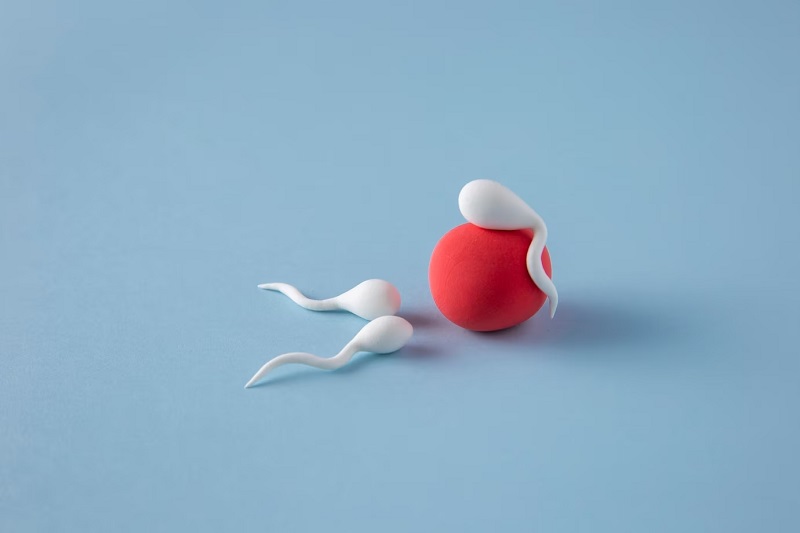Table of Contents
Semen analysis is a crucial diagnostic test used to assess male fertility potential. Examining various parameters of semen provides valuable insights into sperm health and function. How does one interpret sperm count, motility, or morphology? What are the normal ranges, and what do deviations signify? In this blog helps you interpret a typical semen analysis report—covering sperm count, motility, morphology, and even the presence of pus cells in semen–so you can understand what your results actually mean.
What is a Semen Analysis Test Normal Report or How to Read a semen analysis report?
A normal semen analysis report provides valuable information about different aspects of semen, such as volume, sperm count, motility, morphology, vitality, pH level, and liquefaction time. By assessing these parameters, healthcare professionals can evaluate male fertility potential and identify any potential issues that may affect conception.
Semen Analysis Test Normal Report
To better understand a semen analysis test normal report, let’s take a look at a typical example. Please note that actual reports may vary slightly, but the following parameters are commonly included in a semen analysis test normal report.
We are now sharing the Steps of How to Read the Semen Analysis Report:
1. Semen Ejaculate Volume
The semen ejaculate volume refers to the amount of semen released during ejaculation. Normal semen volume typically ranges from 1.5 to 5 milliliters. This measurement is crucial as it ensures that an adequate amount of semen is available to transport and nourish sperm during their journey towards the egg.
2. Total Sperm Number
Total sperm number, also known as sperm count, indicates the total number of sperm present in the ejaculate. The normal range for total sperm number is typically 15 to 200 million sperm per milliliter. This parameter helps assess the overall sperm production and the likelihood of successful fertilization.
3. Sperm Concentration
Sperm concentration measures the number of sperm per milliliter of semen. A normal sperm concentration usually falls within the range of 15 to 200 million sperm per milliliter. This value is crucial as it reflects the density of sperm within the ejaculate and plays a significant role in fertility assessment.

4. Normal Range of Sperm Motility
Sperm motility refers to the ability of sperm to move effectively. Sperm motility is super important when it comes to figuring out how fertile a person is. You see, for pregnancy to happen, those little swimmers need to be able to swim through the female reproductive tract and find their way to the egg for fertilization. That’s why sperm motility is a key factor in determining fertility potential
Typically, a normal range of sperm motility is defined as having at least 40% to 50% of the sperm exhibiting forward movement. This forward progression is graded on a scale of 0 to 4, with higher grades indicating better motility. It’s important to keep in mind that not all sperm will have the same level of movement, and it’s normal to have a mix of different motility grades.
5. Pus Cells in Semen: Normal Range, Meaning & When to Seek Help
If you’re reading your semen analysis report and notice a note about pus cells in semen, don’t panic. These are commonly referred to as round cells and can be one of two types – either white blood cells (WBCs) that indicate a possible infection or immature sperm cells that are part of normal sperm development.
In a typical semen analysis, the normal range of pus cells in semen is around 1–2 cells per high-power field (HPF). This is usually not a cause for concern and often doesn’t require any treatment. However, if the count increases to more than 4 pus cells/HPF, especially alongside symptoms like burning urination, discomfort during ejaculation, or unusual discharge, further evaluation may be necessary.
When pus cells in semen are found in higher numbers, your doctor may suggest a semen culture test to rule out infections such as prostatitis or sexually transmitted infections. Addressing such infections early is important for protecting sperm health and fertility outcomes.
6. Normal pH Of Semen
The pH level of semen refers to its acidity or alkalinity and is another important parameter assessed in a semen analysis. The normal pH of semen is typically between 7.2 and 8.0. Maintaining an appropriate normal ph of sperm is essential for sperm survival and function within the female reproductive tract. Deviation from the normal ph of sperm can impact sperm health and fertility. A pH level that is too high or too low may indicate an imbalance or underlying condition that needs further investigation. A high pH level in semen could indicate the presence of infection or inflammation, whereas a low pH level might suggest a problem with the seminal vesicles or prostate gland.
7. Normal Morphology of Sperm
Sperm morphology refers to the size and shape of sperm. Normal Morphology of Sperm Percentage must indicate at least 4% to 14% of sperm with normal size and shape. This is ideally considered within the normal range. Various abnormalities in sperm shape, such as a bent neck, double head, or tail defects, can impact fertility. An abnormal morphology may reduce the sperm’s ability to penetrate the egg and fertilize it effectively.
8. Sperm Vitality
Sperm vitality refers to the percentage of live sperm in the ejaculate. A normal range for sperm vitality is typically above 58%. This parameter provides insight into the proportion of viable sperm that have the potential to fertilize an egg.
Assessing sperm vitality is crucial because live, functional sperm is necessary for successful fertilization. A high percentage of non-viable or dead sperm can affect fertility. While semen analysis cannot provide information on the specific cause of reduced vitality, it can alert healthcare professionals to potential issues that may require further investigation.
9. Sperm Liquefaction Time
Semen initially has a gel-like consistency due to proteins and enzymes present in the seminal fluid. Over time, it undergoes a process called sperm liquefaction, where it changes to a more liquid state. The normal liquefaction time of sperm semen is typically less than 60 minutes. Proper liquefaction is crucial for the release and mobility of sperm. If the semen fails to liquefy within the expected timeframe, it may impact the sperm’s ability to swim freely and reach the egg for fertilization. Prolonged liquefaction time may be indicative of certain conditions or issues that need to be addressed.
Normal Sperm Count Range (Quick Reference)
| Parameter | Normal Range |
|---|---|
| Volume | 1.5 to 5.0 mL per ejaculation |
| Sperm Count | 15 to 200 million/mL |
| Pus Cells in Semen | 1–2 per HPF (normal); >4 may need check |
| Morphology (normal forms) | ≥4% normal-shaped sperm |
| Motility | ≥40–50% showing forward movement |
| Vitality | >58% live sperm |

Summary
Now that we have shared how to read the semen analysis report and helped you understand the parameters assessed in the semen analysis report, you can easily decode the respective normal ranges that are essential for evaluating male fertility potential. If your results fall within the normal range for each parameter, it generally indicates good reproductive health. However, if any parameter falls outside the normal range, it is advisable to consult with an IVF Specialist for further evaluation and guidance. With informed understanding and guidance, you can navigate the process of fertility assessment with confidence and clarity.
Don’t self-medicate because the adverse effects of the wrong medicine/ treatment may further reduce your fertility. Contact us to help you!
FAQs
It is generally recommended to abstain from ejaculation for 2 to 5 days before providing a semen sample for analysis. This period allows the sperm to replenish and ensures an accurate assessment of semen parameters.
The turnaround time for receiving sperm analysis results may vary depending on the laboratory. Typically, results are available within 1 to 2 weeks. It’s best to check with your healthcare provider or the laboratory for the specific timeframe in your case.
The normal range of sperm count typically falls between 15 million to 200 million sperm per milliliter of semen.
Good sperm motility refers to the ability of sperm to swim effectively, with a forward progression.
Yes, 70% sperm motility is considered within the normal range for fertility.
While significant improvement in sperm motility within 2 weeks is unlikely, lifestyle changes such as diet and exercise can positively impact sperm health over time.
Foods rich in antioxidants, zinc, and omega-3 fatty acids, such as nuts, fruits, vegetables, and fish, may help improve sperm production and motility.




